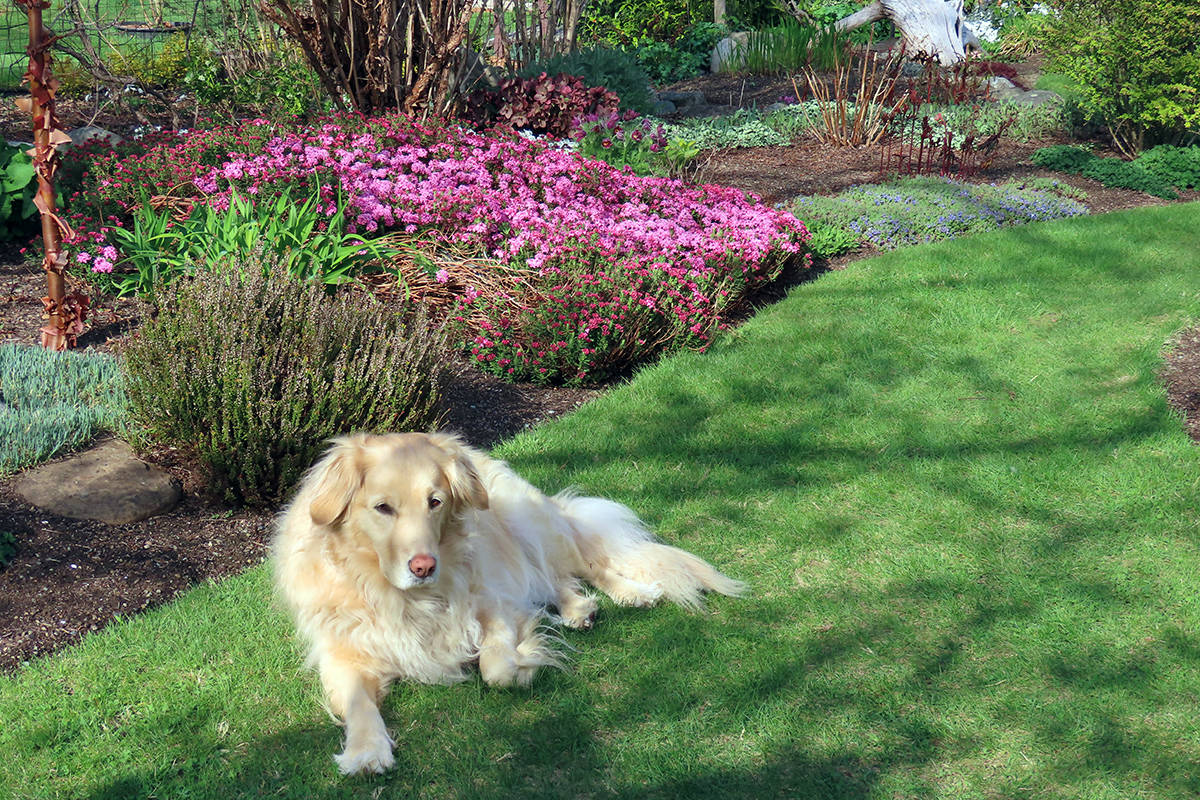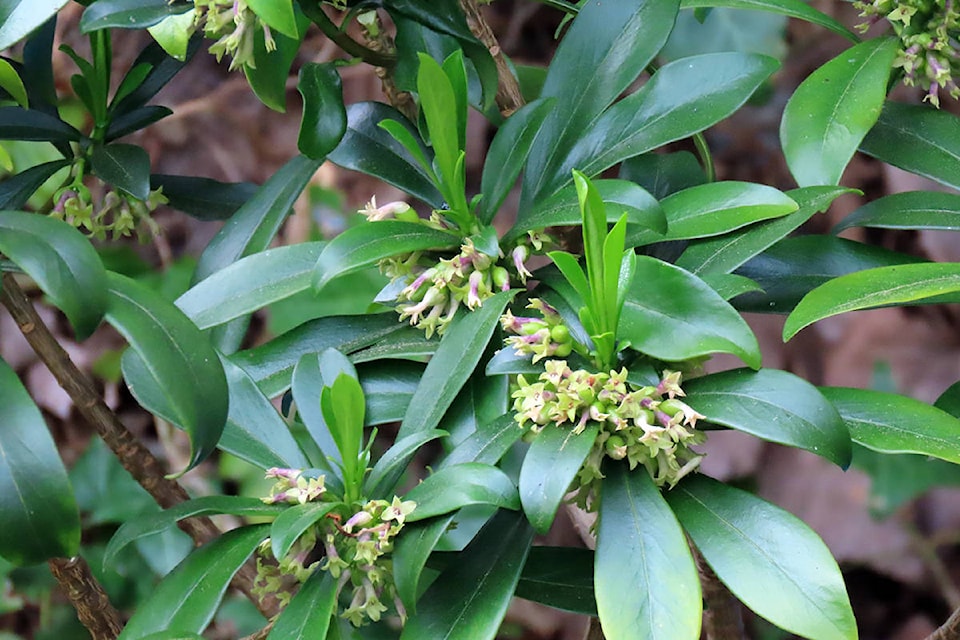Leslie Cox
Special to The Record
In an email addressed to the Comox Valley Record editor, concern was raised about the increasing spread of spurge-laurel, daphne laureola, in the Kye Bay area. The suggestion was presented perhaps an article about this invasive plant might be beneficial to the residents of our Valley. A good idea indeed!
This particular plant is noted under the “additional unregulated invasive plants of concern in B.C.” But only on the bcinvasives.ca website. The Field Guide to Noxious Weeds and Other Selected Invasive Plants of British Columbia has not been updated as yet. In fact, there are now 31 unregulated invasive plants of concern noted on the website list versus 18 plants noted in the print copy of the field guide. High time an up-to-date ninth edition was published, I think.
Native to much of Europe and parts of northern Africa, daphne laureola was introduced into a Welsh garden pre-1780s and eventually found popularity with gardeners in adjacent England. Who could blame them? Lush, dark green, year-round foliage; a reasonable height of four-to-five feet; early yellow flowers for the bees, albeit on the small size; lovely blue-black berries in the fall…this plant has it all.
Too much of a good thing? You bet. Birds absolutely adore the berries, gorging themselves before taking flight to spread daphne seeds randomly across the wider landscape. And like my multitudes of chestnuts, a large number of daphne seeds manage to set down roots where they land and start to grow… no matter the soil conditions.
Too bad for the native plants growing within a daphne’s reach. Their evergreen foliage guarantees the little native seedlings will struggle for necessary light in order to grow above the height of the interloper. Too often the success rate is dangerously low and the prolific daphnes begin to take over.
But wait! There is an even more sinister side to the spurge-laurel. Toxicity. According to the Canadian Biodiversity Information Facility, all parts of the plant from seed to leaf tip can cause skin irritation, excessive salivating, difficulty swallowing, abdominal pain, and diarrhea. Death has also been recorded in a few extreme cases of ingestion.
Sadly, daphne laureola has spread through the southwestern region of B.C., including the Gulf Islands and it is making its way north on Vancouver Island. Perhaps we should not wait for the government to set out a control mandate. Did you know May has been designated BC Invasive Species Action Month? And even though we are still held in strict self-isolation, there is nothing stopping us from picking up the initiative and remove any spurge-laurels we find in our own yards and neighbourhoods. Dressed appropriately, of course. Long sleeves, long pants, proper shoes, gloves, and protective eyewear will ensure none of the toxic sap touches your skin.
But wait! There are two other daphnes on the poisonous list. And lovely ones too. We have them both in our own garden: daphne cneorum (rock daphne) and D. mezereum (February daphne). Thankfully, these two species are not invasive. In fact, it is a shame they do not seed around because their floral scent is divine. And far-reaching on even the gentlest of breezes. Scent aside, keep their toxicity in mind when working around all daphnes.
Due to COVID-19 and the restrictions in place, our garden is closed to visitors until such time as health authorities deem it safe to ease the current isolation ruling. Stay safe, stay well and hopefully some of the season can be rescued and we will be able to share our garden with visitors. Rest assured, we miss you!
Leslie Cox co-owns Growing Concern Cottage Garden in Black Creek. Her website is at www.duchessofdirt.ca

